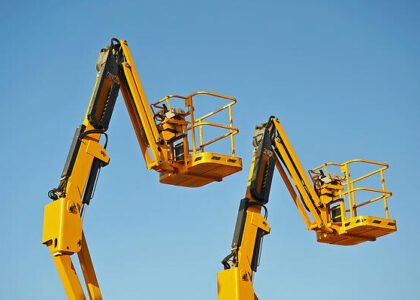Laser cleaning machine one of the most advanced and eco-friendly solutions in industrial cleaning. By utilizing high-powered lasers, these machines are able to clean surfaces with precision and efficiency, without damaging the material underneath. In contrast to traditional cleaning methods, which often rely on harsh chemicals or abrasive techniques, laser cleaning offers a non-contact, non-abrasive solution that is both safe and effective.
In this blog post, we’ll dive deep into the world of laser cleaning machines, exploring their benefits, how they work, and why they’re gaining popularity across various industries. Whether you’re involved in manufacturing, automotive, or heritage restoration, this technology can provide a cleaner, more sustainable solution for all your cleaning needs.
What is Laser Cleaning?
Laser cleaning, also known as laser ablation, is the process of using laser technology to remove contaminants, rust, paint, and other materials from a surface. The laser is focused on the area to be cleaned, and the energy from the laser beam interacts with the contaminants, causing them to evaporate or be blown away by the resulting pressure.
This method is highly effective for cleaning delicate or hard-to-reach surfaces where traditional cleaning methods may not be feasible. Moreover, laser cleaning can work on a variety of materials, including metals, plastics, and even ceramics.
How Laser Cleaning Works
Laser cleaning machines operate on a relatively simple principle, but the technology behind them is quite advanced. Here’s a step-by-step breakdown of how laser cleaning works:
-
Laser Generation: The machine generates a high-powered laser beam, often using a fiber laser source, which emits a concentrated light.
-
Focusing the Beam: The laser beam is directed toward the surface of the material to be cleaned. The beam is typically focused using a lens or mirror to achieve the required intensity.
-
Laser Interaction: When the laser beam strikes the surface, it heats the contaminants (such as rust, oil, or paint). This causes the contaminants to evaporate, dislodge, or be blown away by the vaporization process.
-
Removal of Contaminants: The heat causes the contaminants to either turn into gas, which is then expelled by the pressure of the laser, or be removed mechanically if the laser breaks them apart.
-
Surface Restoration: The laser cleaning process leaves the surface of the material pristine, without altering the properties of the base material.
Key Benefits of Laser Cleaning Machines
Laser cleaning machines offer several advantages over traditional cleaning methods. Below are some of the key benefits:
1. Eco-Friendly
Traditional cleaning methods often use harmful chemicals, abrasive materials, or solvents. Laser cleaning, on the other hand, is completely chemical-free. There are no toxic by-products or hazardous waste, making it an environmentally friendly option.
2. Precision and Efficiency
Laser cleaning is incredibly precise. The laser can target very specific areas without affecting the surrounding material, making it ideal for delicate or complex surfaces. Additionally, laser cleaning is faster and more efficient than manual cleaning.
3. No Wear and Tear
Because laser cleaning is non-contact, it doesn’t cause physical wear or abrasion to the surface. Traditional cleaning methods often involve scrubbing, sanding, or scraping, which can damage the material over time.
4. Cost-Effective in the Long Term
While the initial investment in a laser cleaning machine may be higher compared to conventional methods, the long-term savings are significant. Laser cleaning reduces labor costs, eliminates the need for consumables (like cleaning chemicals), and enhances the longevity of your equipment.
5. Versatility
Laser cleaning machines can be used on a wide range of materials, from metals and plastics to stone and concrete. This versatility makes it a go-to cleaning solution across various industries, including automotive, aerospace, and manufacturing.
6. Improved Safety
There are no chemicals involved in laser cleaning, and the process does not produce any harmful fumes or dust, making it safer for workers. The precision and controlled nature of the technology also ensure that the risk of accidents is minimized.
Applications of Laser Cleaning Machines
Laser cleaning machines are used in various industries for a range of applications. Below are some of the most common uses:
1. Rust Removal
Laser cleaning is highly effective for removing rust from metal surfaces. It can quickly and efficiently clean large metal structures such as bridges, pipes, and steel beams, restoring their original appearance without damaging the underlying material.
2. Surface Preparation for Coating
Before applying coatings, paints, or adhesives to a surface, it’s essential to clean it thoroughly. Laser cleaning removes contaminants, oils, and other residues that might hinder the bonding process, ensuring a cleaner and stronger adhesion.
3. Heritage Restoration
Laser cleaning is a valuable tool in the restoration of historical artifacts, buildings, and monuments. Since the process is non-abrasive and highly controlled, it allows for the removal of dirt and grime without harming delicate surfaces like stone or old paintwork.
4. Paint Removal
In the automotive and aerospace industries, laser cleaning machines are used to remove old or damaged paint without damaging the underlying substrate. This is particularly useful in cases where parts need to be repainted or refurbished.
5. Welding and Manufacturing
In manufacturing environments, laser cleaning is often used to prepare surfaces before welding. It ensures that the surfaces are free from contaminants that could affect the quality of the weld.
Frequently Asked Questions (FAQs)
Q1: Is laser cleaning safe?
Yes, laser cleaning is safe when performed by trained professionals. The process is non-contact, which means there is no physical risk of injury from scrubbing or abrasives. Additionally, laser cleaning machines are designed with safety features such as protective enclosures to prevent exposure to laser radiation.
Q2: Can laser cleaning be used for all materials?
Laser cleaning is highly versatile and can be used on many materials, including metals, plastics, ceramics, and composites. However, the efficiency of the cleaning process may vary depending on the material and the type of contaminants present.
Q3: How long does it take to clean a surface with a laser cleaning machine?
The time it takes to clean a surface depends on several factors, including the type of material, the size of the area to be cleaned, and the thickness of the contamination. However, laser cleaning is generally much faster than traditional methods like sandblasting or chemical cleaning.
Q4: Is laser cleaning environmentally friendly?
Yes, laser cleaning is an environmentally friendly process. It does not produce harmful chemicals, dust, or waste, making it a sustainable choice for industrial cleaning. This is particularly important in industries that prioritize green practices and aim to reduce their carbon footprint.
Q5: How much does a laser cleaning machine cost?
The cost of a laser cleaning machine varies based on its power, features, and capabilities. While the initial investment can be higher than traditional cleaning methods, the long-term benefits in terms of efficiency, labor savings, and reduced material costs often outweigh the upfront cost.
Technical Specifications of Laser Cleaning Machines
| Feature | Description |
|---|---|
| Laser Type | Fiber, CO2, or DPSS (Diode-pumped solid-state) lasers |
| Power Output | Ranges from 100W to 2000W depending on application |
| Cleaning Speed | 1–5 m²/min depending on material and contamination |
| Cooling System | Air-cooled or water-cooled systems |
| Control System | Manual or automatic control with adjustable settings |
| Beam Diameter | 0.1mm to 10mm for precise cleaning |
| Material Compatibility | Metals, plastics, ceramics, stone, and composites |
| Safety Features | Protective enclosures, laser shields, and safety glasses |
Why Choose Laser Cleaning Machines for Your Business?
Laser cleaning machines provide a precise, efficient, and eco-friendly solution to industrial cleaning problems. Whether you’re looking to remove rust, prepare surfaces for welding, or restore historical artifacts, these machines offer a versatile and cost-effective option for improving the quality and speed of your cleaning processes.
Their ability to handle delicate and complex cleaning tasks with minimal risk of damage, combined with their long-term cost savings, makes them an essential tool for businesses across multiple industries.






